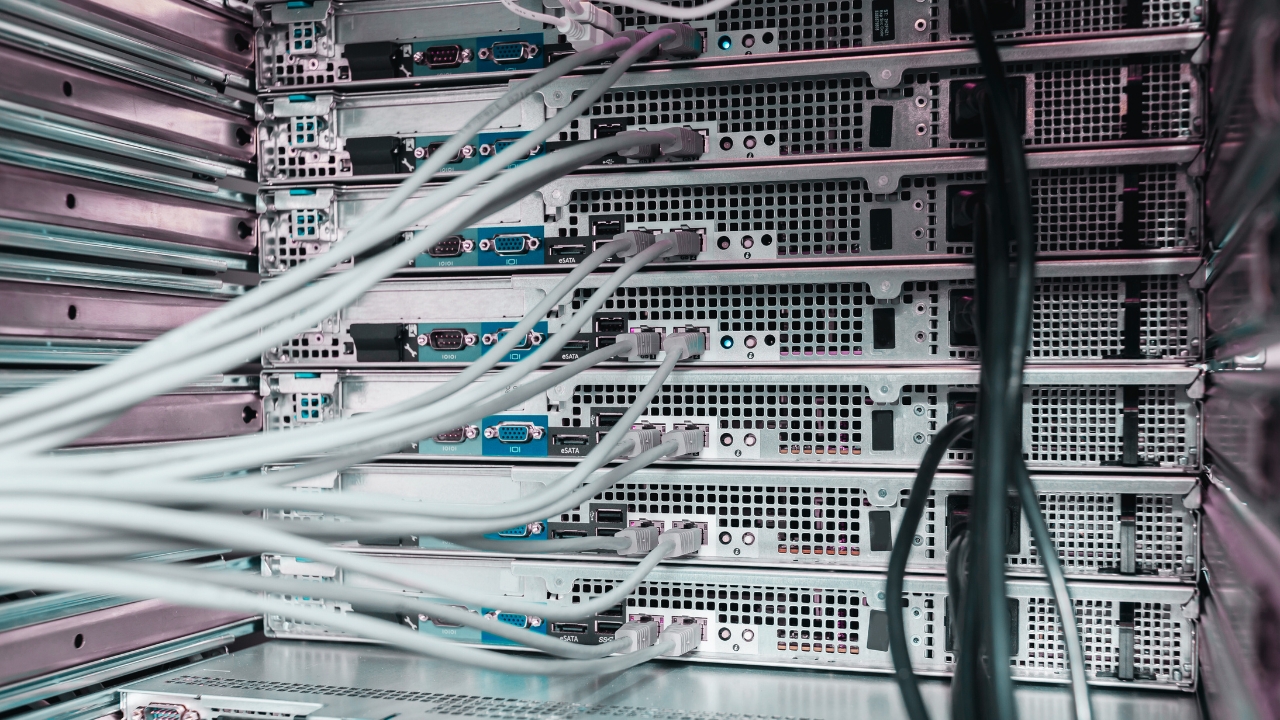
Managing computer infrastructure is as complex as the hardware that powers it. From compute to storage and networks, each individual hardware component needs to be manually configured and managed individually, which can be incredibly challenging for complex infrastructures.
Software defined Infrastructure prevents this from happening, making it easier for IT teams to seamlessly manage hardware components without having to worry about configuring servers, storage, and networking equipment.
This article tells you everything you need to know about software-defined infrastructure, including what it is, how it works, and how it helps IT teams manage computer systems.
What is a software defined infrastructure (SDI)?
Software defined infrastructure (SDI) is an approach to managing IT infrastructure where compute, networking, and storage resources are pooled and managed as if they were software.
Traditionally, IT teams had to adjust physical switches and servers and storage units to set up computer systems. But with SDI, the control and management of infrastructure components are moved from the hardware layer to the software layer, allowing IT teams to manage resources from a central location.
A common way to implement software-defined infrastructure is through a software-defined data center (SDDC), which virtualises all the computing, storage, and networking resources so they can be managed as a single pool.

This means you can manage resources like compute power, storage space, and network configurations from a central location and easily allocate resources based on your needs.
SDI isn't tied to specific hardware vendors either , so you can choose what works best for you without being locked into a particular brand.
Components of software defined infrastructure
Software defined infrastructure relies on several key components working together to create a software defined data center (SDDC) where all the IT infrastructure resources are pooled, virtualized, and managed through software.
Within an SDDC, all the computing, storage, and networking resources are virtualized and managed as a single pool using software. This creates a more agile, scalable, and efficient IT environment.
Some of the core components required to create an SDDC include:
1. Software Defined Compute (SDC)
Software-defined computing focuses on virtualizing and abstracting the processing power of physical servers. With SDC, multiple virtual machines (VMs) can run on a single physical server, each with its own operating system and applications. This maximizes resource utilization and simplifies the process of scaling up or down as needed.
2. Software Defined Storage (SDS)
Software-defined storage abstracts and virtualizes storage resources, allowing for thee centralized management and allocation that enables software-defined infrastructure. It detaches the software layer from the physical storage hardware, enabling dynamic storage provisioning, replication, and data migration. SDS simplifies data management, enhances data availability, and reduces storage costs.
3. Software Defined Networking (SDN)
Software-defined Networking separates the network control plane from the data plane, enabling centralised network management through software controllers. SDN provides agility and scalability by allowing administrators to adjust network policies and configurations programmatically.
4. Automation and Orchestration tools
Automation and orchestration play a pivotal role in SDI by automating repetitive tasks and orchestrating the provisioning and management of resources. These tools ensure that the infrastructure adapts to changing demands in real-time, minimizing manual intervention and human errors.
SDN vs SDI?: What’s the difference?
Software defined infrastructure (SDI) and software defined network (SDN) are related concepts, but they have distinct scopes. While SDI encompasses the entire IT infrastructure and its management through software, SDI is a specific technology within SDI that focuses solely on managing the network.

SDN is a key component that falls under the umbrella of SDI, specifically dealing with the software defined management of network resources. Think of SDI as managing an entire data centre through software, whereas SDN is a specific tool that helps manage the network within that data center.
Why choose software defined infrastructure?
SDI offers many benefits that help IT teams find more agile, efficient, and cost-effective ways to manage IT infrastructure amd respond to changing business needs.
Some of the key benefits include:
1. Agility
SDI allows you to respond quickly to changing business needs by letting you dynamically allocate and re-allocate resources based on demand. This makes it easier to scale your IT infrastructure up or down as needed, whether you're experiencing a surge in web traffic or need to provision resources for a new project.
2. Efficiency and Cost Savings
By virtualizing resources and automating tasks, software-defined infrastructure can significantly improve efficiency and reduce costs. You can allocate exactly what's needed for a workload and consolidate workloads onto fewer servers, reducing hardware acquisition and maintenance costs. SDI also allows you to avoid vendor lock-in as you're not tied to specific hardware vendors for computing, storage, or networking.
3. Simplified Management
SDI centralizes management through a software layer, providing a single pane of glass for provisioning, monitoring, and troubleshooting resources. This simplifies IT operations and reduces the workload for your IT staff.
Scaling your IT infrastructure up or down becomes a much simpler process with SDI. Software adjustments can be made to allocate more resources when needed or scale back when demand subsides. This allows you to keep pace with changing business requirements without significant hardware investments.
4. Improved Disaster Recovery
Software-defined infrastructure can streamline disaster recovery by enabling automatic failover and replication of critical applications and data. This minimizes downtime and ensures business continuity in case of hardware failures or outages.
5. Cloud Integration
SDI integrates well with cloud environments, allowing you to seamlessly extend your on-premises infrastructure to the cloud. This provides greater flexibility and enables you to take advantage of the benefits of cloud computing, such as scalability and pay-as-you-go pricing.
Examples of software defined infrastructure
1. Large Cloud Providers
Companies like Amazon Web Services (AWS), Microsoft Azure, and Google Cloud Platform (GCP) offer cloud computing services that are essentially built on SDI principles. They provide on-demand access to virtualized computing, storage, and networking resources that users can scale up or down based on their needs.
2. Enterprise Data Centers
Many large enterprises are adopting SDI practices to manage their on-premises data centers. They can leverage tools like VMware vSphere for compute virtualization, OpenStack for orchestration across various resources, and software-defined storage solutions like Ceph or NetApp to create a more agile and efficient data center environment.
3. Telecommunication Companies
Telecom providers are increasingly using SDN (a core component of SDI) to manage their complex networks. SDN allows them to dynamically allocate bandwidth, prioritize traffic, and optimize network performance to meet the demands of emerging technologies like 5G.
4. Managed Service Providers (MSPs)
MSPs can leverage SDI tools to deliver infrastructure as a service (IaaS) offerings to their clients. This allows them to offer scalable and flexible IT infrastructure solutions without requiring clients to manage the underlying hardware complexities.












